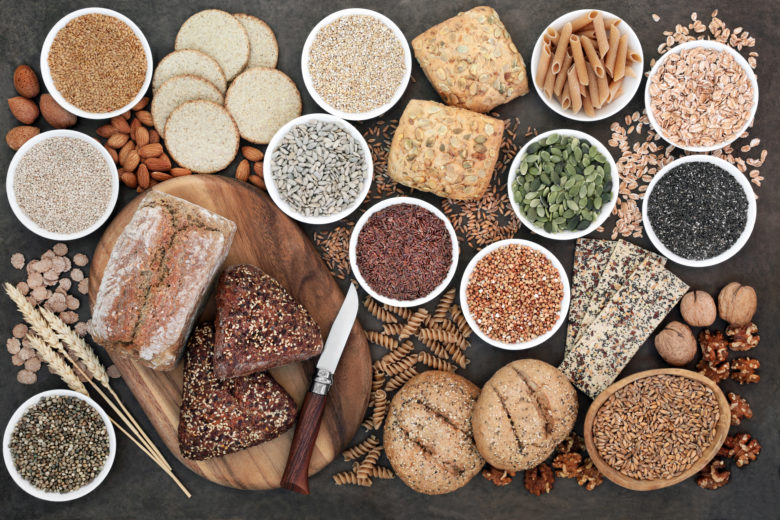
Did you know that 99 percent of all Americans don’t meet the daily whole grain recommendations? The 2010 Dietary Guidelines for Americans recommends that all adults make at least one-half of their grains whole, which equals about five servings of whole grains per day. According to the Whole Grains Council website, Americans eat less than once serving per day, and some studies have shown that 40 percent of people don’t consume any whole grains daily!
When we don’t eat enough whole grains, we’re missing out on important vitamins and minerals like calcium, vitamin D and potassium. They are also excellent sources of vitamin E, B vitamins, zinc, iron and magnesium. Whole grains are full of fiber which helps you feel full. Rich in phytosterols, they can lower your cholesterol, and, finally, whole grains are “superfoods,” known to keep heart disease, type 2 diabetes and obesity at bay.
Oats, quinoa, brown rice, barley and farro are all great sources of whole grains. It can be daunting to hit five servings of whole grains daily. Try these tips to include nutritious grains into your meals!
Oats
The most popular use for oats is breakfast cereals. Buy old-fashioned oats and add your own toppings such as strawberries, blueberries, honey, brown sugar or even a dollop of Greek yogurt. Try steel-cut oats, which consist of the entire oat kernel, sliced once or twice into small pieces so more water can absorb during the cooking process. Transform your oats into granola bars or cookies and include your family’s favorite add-ins, such as raisins, dried cranberries or dark chocolate chips.
Quinoa
Cooking quickly in about 10-12 minutes, quinoa makes a light and fluffy side dish. You can also use quinoa in salads, soups and baked goods. Top your salads with a pile of cooled quinoa, or mix with sautéed vegetables for a fiber-filled side dish. Mix with egg, broccoli, breadcrumbs and cheese and fry in olive oil for an easy vegetarian patty. This whole grain is a complete protein, which means it contains all the amino acids our bodies can’t make on their own, great for vegetarians and vegans.
Brown rice
Rice is one of the most easily digested grains, ideal for those who are gluten-intolerant. Look for whole-grain brown rice instead of refined white rice. To make an easy rice pilaf, cook the rice according to package instructions, using chicken broth instead of water. Add finely chopped veggies such as carrots and celery to add extra fiber and crunch.
Barley
To make sure you’re getting a whole-grain, make sure to look for whole barley or hulled barley. This grain is very slow-cooking, but retains much more whole-grain nutrients. Lightly pearled barley is not technically a whole grain, but has more fiber and nutrients than a fully-refined grain. Add barley to soups and stews. If you’re using whole barley, add to dishes that you’re cooking in the crock pot to allow it to cook thoroughly!
Farro
One of the ancient grains, farro has a distinctive nutty flavor and chew. The whole-grain variety (as opposed to pearled) has the highest amount of fiber and vitamins. Cook according to package instructions, and mix into rice pilafs, chill and top a spinach salad, or bake into a cheesy casserole. Mix with your favorite roasted veggies, olive oil and garlic for a quick cold pasta salad. You could even toss cooked farro with your favorite warm pasta dishes to add a nutty, chewy flavor!


